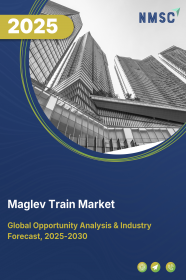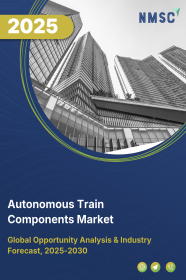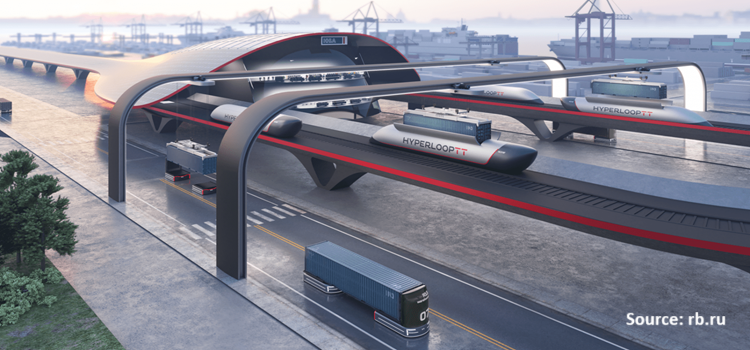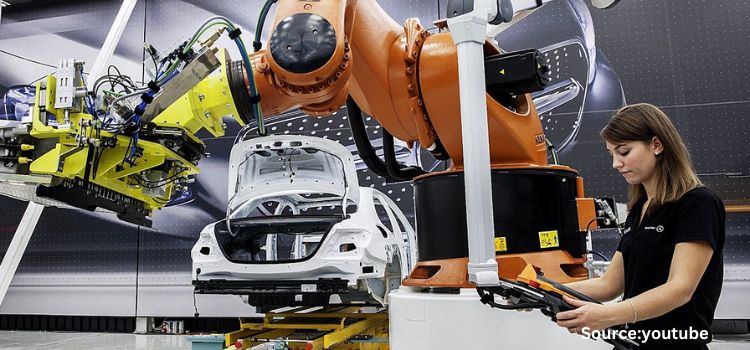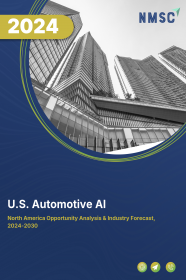
U.S. Automotive AI Market by Component (Hardware, Software, and Services), by Technology (Machine Learning & Deep Learning, Computer Vision, and Natural Language Processing), and by Application (Semi-Autonomous and Fully Autonomous) - Opportunity Analysis and Industry Forecast, 2024– 2030
Industry: Automotive & Transportation | Publish Date: 04-Apr-2024 | No of Pages: 101 | No. of Tables: 71 | No. of Figures: 36 | Format: PDF | Report Code : N/A
US Tariff Impact on U.S. Automotive AI
Trump Tariffs Are Reshaping Global Business
Market Definition
The U.S. Automotive AI Market size was valued at USD 1.40 billion in 2023, and is predicted to reach USD 7.75 billion by 2030, at a CAGR of 27.7% from 2024 to 2030. Automotive Artificial Intelligence, or Automotive AI, refers to the application of machine learning and artificial intelligence technologies in the design, development, and operation of vehicles and related systems within the automotive industry. Automotive AI consists a wide range of applications, including autonomous driving, advanced driver assistance systems (ADAS), predictive maintenance, natural language processing for in-car voice recognition, and improving the overall efficiency and safety of vehicles. This technology enables vehicles to perceive their surroundings, make decisions, and interact with drivers and passengers. This further enhances the driving experience, safety, and efficiency of automotive systems.
Increasing Demand for the Electric Vehicles is Driving the Growth of the Market
The surging demand for electric vehicles (EVs) is significantly driving the automotive landscape. Also, the integration of artificial intelligence (AI) is playing a pivotal role in optimizing various sides of electric vehicle technology. AI is at the forefront of battery management, where advanced algorithms monitor and predict battery health, ensuring longevity and reliability. Additionally, machine learning is harnessed to enhance the energy efficiency of EVs, optimizing power usage and improving range prediction accuracy. The optimization of charging infrastructure, personalized user experiences through natural language processing and voice recognition, and the implementation of predictive maintenance contribute to a seamless and efficient electric vehicle ownership experience. As the automotive industry continues to transition towards sustainability, the synergy between AI and electric vehicles is driving innovations that not only meet environmental goals but also elevate the overall performance and user satisfaction within the electric vehicle market.
Rising Technological Advancements in Automotive AI Fuels the Market Expansion
Rapid technological advancements in artificial intelligence (AI) are propelling the automotive industry forward. Breakthroughs in algorithms, machine learning, and deep learning techniques are involved in making vehicles smarter and more capable. Machine learning enables cars to learn and adapt from data, while deep learning, with its complex neural networks, enhances capabilities such as image and speech recognition critical for advanced driver assistance systems (ADAS) and in-car infotainment. These advancements boost the performance of existing AI applications, such as predictive maintenance and optimized fuel efficiency, and also pave the way for innovative features. Automotive manufacturers integrate the latest AI capabilities to stay competitive and meet consumer expectations for enhanced safety, convenience, and an overall superior driving experience. The relentless evolution of AI technologies is a driving force behind the expansion of the automotive AI market.
Standardization Challenges Associated with Automotive AI Hinders the Market Expansion
The lack of standardization poses a significant challenge in the realm of automotive AI, as the industry grapples with the absence of universally accepted protocols governing the development and deployment of these advanced technologies. This deficiency gives rise to interoperability issues, making it challenging for AI systems from different manufacturers to communicate seamlessly. Compatibility challenges arise as proprietary technologies diverge, hindering the creation of a cohesive and interconnected automotive AI ecosystem. Furthermore, this absence of common standards leads to market fragmentation, making it difficult for stakeholders to navigate and understand the rapidly evolving landscape of automotive AI.
Integration of Augmented Reality (AR) in Vehicles is Expected to Create Opportunity Growth for the Market
Augmented Reality (AR) in vehicles represents a cutting-edge application of artificial intelligence (AI) that focuses on enriching the driver's experience and safety. By integrating AI algorithms and visual overlays into the driver's field of view, typically through Head-Up Displays (HUDs) on windshields, AR enhances situational awareness on the road. AI-powered object recognition ensures the identification and highlighting of pedestrians, cyclists, and road signs, aiding the driver in navigating complex traffic scenarios. Navigation instructions, traffic alerts, and critical safety information are seamlessly displayed, reducing the need for the driver to shift attention away from the road. This technology also extends to interactive controls, allowing for touchless gestures or voice commands, further minimizing distractions.
Competitive Landscape
The market players operating in the U.S. automotive AI market include NVIDIA Corporation, Alphabet, Inc., Intel Corporation, Microsoft Corporation, IBM Corporation, Qualcomm, Inc., Tesla, Inc., BMW AG, Micron Technology, Xilinx, Inc.
U.S. Automotive AI Market Key Segments
By Component
-
Hardware
-
Software
-
Services
By Technology
-
Machine Learning & Deep Learning
-
Computer Vision
-
Natural Language Processing
By Application
-
Semi-Autonomous
-
Fully Autonomous
REPORT SCOPE AND SEGMENTATION:
|
Parameters |
Details |
|
Market Size in 2023 |
USD 1.40 Billion |
|
Revenue Forecast in 2030 |
USD 7.75 Billion |
|
Growth Rate |
CAGR of 27.7% from 2024 to 2030 |
|
Analysis Period |
2023–2030 |
|
Base Year Considered |
2023 |
|
Forecast Period |
2024–2030 |
|
Market Size Estimation |
Billion (USD) |
|
Growth Factors |
|
|
Companies Profiled |
10 |
|
Market Share |
Available for 10 companies |
|
Customization Scope |
Free customization (equivalent up to 80 working hours of analysts) after purchase. Addition or alteration to country, regional, and segment scope. |
|
Pricing and Purchase Options |
Avail customized purchase options to meet your exact research needs. |
KEY PLAYERS
-
NVIDIA Corporation
-
Alphabet, Inc.
-
Intel Corporation
-
Microsoft Corporation
-
IBM Corporation
-
Qualcomm, Inc.
-
Tesla, Inc.
-
BMW AG
-
Micron Technology
-
Xilinx, Inc.

















 Speak to Our Analyst
Speak to Our Analyst




